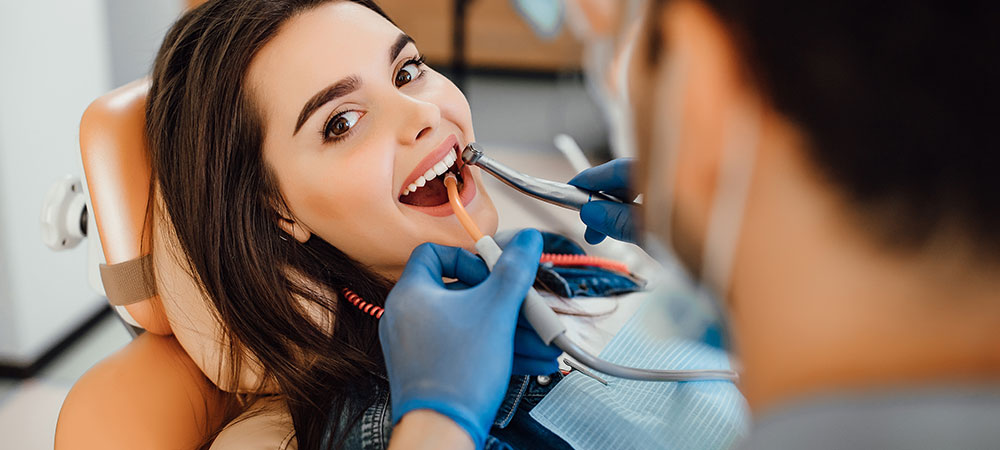Is It Safe & What Are The Risks?
Patients feel so much dread and anxiety as they anticipate the sting and discomfort associated with dental work. Dentists have acquired an ill-deserved reputation for inflicting pain. But the growing popularity of dental sedation will put dentistry in a better light.
Who Needs Dental Sedation?
Dental sedation is a standard procedure that dentists use to help patients feel more at ease during dental treatment. Sedation helps calm the nerves during dental treatments like cleaning, filling and dental surgery for the following patients and conditions:
- Very sensitive teeth
- Excessive fear of needles
- Extreme gag reflex
- Can’t control movements
- Dental phobia
- Panic or anxiety attacks
- Claustrophobia
- Special-needs patients

Sedating toddlers and children who are too restless to complete the treatment or had an unpleasant experience in the past will make the procedure safer and more comfortable. Doing so prevents accidental injury and relieves the parents of stress.
But is it for everyone?
What Are The Dental Sedation Agents?
Dental sedation agents include nitrous oxide, oral conscious sedation (can also be injected) and IV sedation. All these make you feel relaxed and sleepy and help you forget what happened.
With conscious sedation, the patient is relaxed but can still reply and react to stimuli. This sedation is beneficial for adults and children who must undergo multiple procedures. It is also recommended for those with special needs. General anesthesia technically doesn’t fall under sedation but is resorted to as the last option.
The following are the commonly used sedation agents:
Nitrous Oxide
Nitrous oxide or laughing gas is inhaled through the nose using a mask. Classified as mild sedation, dentists can stop the delivery of nitrous oxide anytime during treatment.
Read More
The gas takes effect within minutes, and the dentist can adjust the dose. There is less agitation upon the onset of sedation, but the patient can continue interacting with the dentist. Most of the time, the treatment is pain-free.
Stopping the sedation is followed by the effects quickly wearing off. The body flushes out the gas, and the patient can even drive home after the appointment.
Oral Conscious Sedation
Taken orally, these sedating agents are more potent than nitrous oxide. These cause drowsiness, but the patients are still responsive. The medication is given an hour before the treatment starts, and the effects range from mild to moderate sedation.
Read More
The following are the usual oral sedation drugs, most of which belong to the diazepam family:
- Triazolam
- Zaleplon
- Lorazepam
- Midazolam
IV Sedation
IV sedation has the most profound effects. Recommended for lengthy dental procedures. The patient is in a deep sleep and wakes up without remembering anything about the treatment. The dentist can adjust the dose and use reversal drugs to modify the sedating effects.

Do All Dentists Practice Dental Sedation?
Whether injected anesthesia or sedation is used depends on the situation, patient needs and health. In the hands of experienced and qualified dental professionals, anesthesia and sedation are safe.
However, some clinical conditions are too complex or require more equipment requiring dentists to engage with. In these cases, dental health professionals might work with service providers offering safe sedation practices for pain-free dentistry.
Safety Of Dental Sedation: Precautions And Risks
As much as dental sedation is generally safe, there are also risks. Make sure to engage the services of a qualified dentist to perform mild to moderate sedation. Regular dentists can do minimal to moderate sedation. However, higher qualifications are required for deep sedation. After carefully evaluating your health, the dentist will choose age-appropriate and FDA-approved dental sedation.
General Precautions
Before the procedure, the dentist should carefully review the patient’s medical and medication history to determine whether they are a good candidate for dental sedation. Those with heart and respiratory diseases, sleep apnea or current congestion may be at higher risk.
Here are a few precautions you must know:

Toddlers and Children
It’s usually safe for toddlers and children to have nitrous oxide inhalation sedation for dental work. Kids are usually too anxious or restless to sit through the treatment. Dentists might recommend sedation to perform certain procedures on children.
Pregnant And Breastfeeding Women
Pregnant women are advised to have local anesthesia for dental procedures like gingival treatment, extractions or root canals. On the other hand, dental sedation isn’t advisable since these agents can put the baby at risk.
Read More
While women with topical or dental anesthesia can resume breastfeeding after the procedure, lactating mothers shouldn’t be sedated with opioids and benzodiazepines. These compounds can potentially find their way to milk and cause the baby to be sleepy.
Monitoring of vital signs is done throughout the treatment to ensure safety. Only doses declared safe by the FDA are given. Levels are adjusted as the dentist sees fit, in the case of nitrous oxide and IV drugs. Oxygen, mechanical ventilation and reversal drugs should also be available in the dental clinic.
Patients administered with oral dental sedation or IV therapy will need someone to drive them home. The drugs stay in the system longer and may cause drowsiness, slowed reflexes and lack of mental alertness.
Conclusion
Dental sedation can relax anxious children and adults, so dental professionals complete treatments fast without causing little to no pain. Dental sedation is safe when qualified dentists use methods chosen for the patient’s health condition and age.

